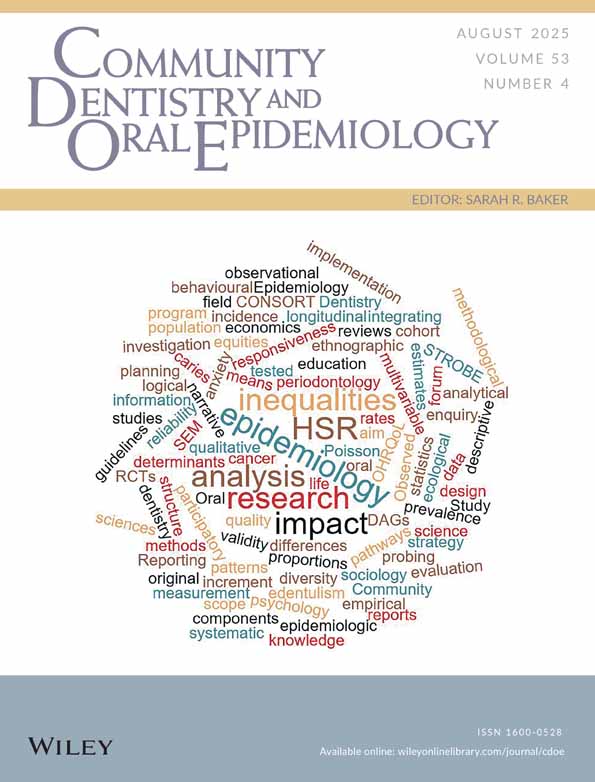Enamel fluoride uptake from mouthrinse solutions with different NaF concentrations
Abstract
Abstract –
Objectives: The influence on enamel fluoride uptake of reducing the NaF concentration of a mouthrinse solution by half, from 0.05–0.025%, was examined in elementary school children.
Methods: The participatory elementary school had employed school-based fluoride mouthrinse with 0.05% NaF solution since 1983, and in 1993, the NaF content was lowered to 0.025%. Dental examination and enamel biopsy of maxillary central incisors were performed just before the NaF content reduction for children who had received the daily 0.05% NaF mouthrinse for 2–5 years since 6 years of age. During 1993–95, dental examination and enamel biopsy were undertaken for newly enrolled 6-year-old children, and the same subjects were re-examined after 2 years. The same series of examinations were conducted for the control group, which consisted of children belonging to another elementary school without a fluoride program.
Results: The enamel fluoride concentration of 8-year-old children who used the 0.025% NaF mouthrinse for 2 years was 1810 ± 535 ppm, reaching the same order as that in children who continued using the 0.05% NaF mouthrinse (1863 ± 1358 ppm), and was significantly higher than that of children without fluoride programs (1113 ± 303 ppm). There was no considerable increase of mean DMFT values due to the NaF content reduction.
Conclusions: It was concluded that a daily 0.025% NaF mouthrinse provides the similar fluoride content for enamel as 0.05% NaF mouthrinse as long as the rinsing frequency is maintained.




